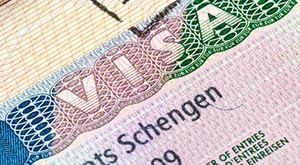A Guide to Traveling in the Schengen Area – Navigating Requirements for European Vacations
Updated As of read 3 min

Are you planning a European vacation? If so, understanding the Schengen Area requirements is essential to ensuring your trip goes smoothly. For most travelers visiting Europe, this means obtaining a visa before traveling.
This can be intimidating; however, with some basic knowledge of what’s required and resources to turn to for support, you’ll have everything you need to breeze through immigration at any Schengen Area airport! In this blog post, we introduce the purpose and scope of the Schengen Area and easy-to-follow guidelines on how to prepare for your upcoming travels.
What is the Schengen Borders Agreement?
According to the Schengen Borders Agreement, people are allowed to travel freely within the 26 European countries that make up this area, provided that they meet the requirements to enter in the first place. Austria, Belgium, the Czech Republic, Denmark, Finland, France, and Germany are just a few countries that make up this area within Europe.
What Countries Are Part of the Schengen Agreement?
| Austria | Belgium | Czech Republic | Denmark | Estonia |
| Finland | France | Germany | Greece | Hungary |
| Iceland | Italy | Lativa | Lithuania | Luxembourg |
| Malta | Netherlands | Norway | Poland | Portugal |
| Slovenia | Spain | Sweden | Switzerland | Slovakia |
| Liechtenstein |
What is the Difference Between the EU and the Schengen Agreement?
What is the difference between the EU and Schengen? The EU is a union that encompasses both political and economic aspects, complete with its own parliament, political structures, and governance. On the other hand, the Schengen Agreement is a treaty designed to facilitate the unrestricted movement of people between the participating countries.
What are the Schengen Travel Requirements?
Are you traveling to any of the 26 countries in the Schengen area in Europe? There are always important things to keep in mind.
For starters, whether your trip is for tourism, business, or even if you’re passing through the Schengen area to reach a separate destination, your passport needs to be valid for at least three full months past your date of departure and for at least six months in total for everything to go as planned.
If you fail to meet this qualification, your airline could potentially deny boarding.
This could be either at your point of origin as your trip begins or while you’re transferring planes. You will also likely be denied entry into the Schengen area altogether.
Schengen Visa Requirements
There are three main types of Schengen visas. You should know which one you will need to prevent any delay. The Uniform Schengen Visa, or USV, allows for a person to reside in the desired country for up to 90 days every six months. The Limited territorial validity visa, or LTV, allows for a person to travel only in the Schengen country.
People who may be studying in a Schengen country will get National visas. Or traveling there for the purposes of business or who may be permanently moving to the country in question. This particular type of visa is designed to be single entry only. It is given under the assumption that the person in question will eventually return to their country of origin.
Expedited Passport Services
If your trip to the Schengen area is coming up and you don’t meet the current travel requirements for one or more reasons, don’t worry – you still have options. Expedited passport services exist specifically for this reason. Instead of waiting the eight to ten weeks it normally takes for new and renewal applications, these services can have your valid passport in hand within 24 to 48 hours in most circumstances.
They will take all of your documents and submit them through the appropriate channels. This will significantly reduce the average processing time, particularly during the peak travel season of the year.
Conclusion
Exploring the Schengen Area can be an unforgettable experience with rewarding moments that will stay with you forever. With every country and town comes unique scenery full of culture, traditions, and plenty of exciting activities to participate in.
From exploring Italy’s rolling hills to biking through the Netherlands — whichever your style may be — you are sure to find something new and captivating when visiting Europe’s Schengen countries.



